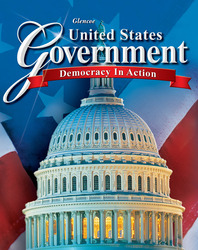United States Government: Democracy in ActionChapter 26:
Development of Economic SystemsChapter Overviews[logo] Essential Question
How can changes in the economic power of a nation like China or India affect global trade and global politics? Section 1 Capitalist and Mixed Systems
Economic systems can be classified into three major types—traditional, market, and command. In a traditional economy, habit and custom dictate the rules for all economic activity, determining what, how, and for whom goods and services are produced. A command economy has a central authority that makes most of the economic decisions. A market economy allows buyers and sellers acting in their individual interests to compete for resources. Most countries have a mixed economic system. In a capitalist or free enterprise market system, the economy is based on private ownership of the factors of production and on individual economic freedom. Government provides some public services and may own some land. Entrepreneurs are free to go into business, to profit, or to risk losses. Other essential aspects of capitalism are competition, freedom of choice, and private property. During the Great Depression, the government took a large role in the economic health of the country. In 2008, the U.S. government intervened heavily during a financial crisis. Section 2 Emerging Economies
Developing nations are mostly agricultural with little or no industry. Newly developed nations have had significant or rapid industrial growth in recent decades. Some have chosen to follow the free market path; others have chosen socialism as their model. Socialist governments are involved in operating important industries. Communist governments own and operate all factors of production. Many developed countries with socialist governments provide "cradle-to-grave" benefits for their citizens, which require high taxes. Developing and newly developed nations that turn to socialism often nationalize existing industries, redistribute land, and set up a welfare system. This, in turn, kills foreign investment, leads to massive debt, and often leads to corruption in government. Section 3 Major Economies in Transition
Many nations today are transitioning from a command economy to a market economy. The two most significant nations in this group are Russia and China. Since the Soviet Union collapsed in 1991, it has been attempting to build a free enterprise system. Russia's leaders have broken up huge, state-owned industries, created a stock market, and initiated other reforms, but progress has been slow. Former Communist bureaucrats who gained control of Russia's resources through bribes and inside knowledge are resistant to reform now that they have become wealthy and powerful. In addition, many Russians do not have a deep understanding of democracy. In the late 1970s, China's Communist leaders began dismantling the centrally controlled economy and encouraging private enterprise. The pace of China's development has been amazing. China's 1.3 billion people provide a large, cheap labor pool. The government gives foreign companies tax breaks and cheap land, and has also spent billions on infrastructure to help manufacturers. Moving from a command economy to a free market economy without changing the political system has worked so far. However, as China's middle class grows, experts predict that the Communist system will either weaken or tighten controls even more. Section 4 The Global Economy
International economic activities include direct investment in foreign companies or real estate, multinational corporations, banking and financial services, currency exchange, and trade among nations. Nations trade to obtain goods and services they cannot produce themselves. They also trade because they may have a comparative advantage in producing some goods more efficiently. Specialization leads to greater total world production. Finally, nations trade to create jobs. Unrestricted trade promotes efficient production but also threatens domestic industries and jobs. As a result, countries restrict trade through tariffs, quotas, health and safety regulations, and embargoes. Since the end of World War II, major nations have created trading blocs to limit unfair trade practices. The World Trade Organization negotiates reductions in trade barriers. The European Union has integrated the economies of and removed all trade barriers among its members. The North American Free Trade Agreement created a large regional economic unit that includes the United States, Canada, and Mexico. The United States advocates fair trade rather than free trade.  | 
















